Schedule A Consultation
healing your body for the long run
Contact Us
Our lead specialist, Dr. Lucy Hostetter, specializes in regenerative medicine to treat tennis elbow and golf elbow. She says: “The elbow is only designed to hinge in one direction, but it still takes quite a bit of abuse and absorbs force with lots of movements. It is also a common area of injury because most all of the forearm muscles and some of the upper arm muscles connect there. Regenerative Medicine shows real promise to promote healing in the elbow during injuries like these.”
Two of the most common injuries that occur to the elbow are called tennis elbow and golfer’s elbow, and both of these involve straining or damaging the tendons of either the flexor or extensor muscles of the forearm. In some cases, surgical procedures are used to repair this type of damage, but there are a number of regenerative medicine treatments that can be both more effective and less invasive.
How do Tennis and Golf Elbow Injuries Occur?
These types of injuries often occur due to overuse of the forearm muscles, and the damage generally affects the tendons that connect these muscles to the bottom portion of the upper arm bone. Many of the muscles in the forearms join together into common tendons, so the tendons can receive lots of stress during certain repetitive movements.
When these tendons are used too often, they can become irritated and swollen. Inflamed tendons can then cause the elbow to be tender to the touch, movements to become painful, joint mobility to be decreased, and numbness or tingling to occur in the hands and fingers.
Golfer’s elbow occurs when the tendons that attach to the inside of the elbow, which also connect to the flexor muscles of the forearm, are irritated, and tennis elbow occurs when the tendons on the outside of the elbow, which attach to the extensor muscles of the forearm, become inflamed. These injuries are named as such because these are the two most common sports in which these injuries occur respectively. However, these tissues can become damaged by other means of chronic use as well.
The Downside of Surgical Procedures
Elbow injuries often have to heal on their own, and this process can last for 18 months or more due to the limited blood flow and poor regenerative ability of tendons. In some cases, patients opt to undergo surgical procedures to try to address the root of their pain directly. Surgical procedures for these injuries most often include open or arthroscopic procedures.
Surgeries generally attempt to release or lengthen the tendons or destroy the nerves causing pain signaling. While these procedures can be successful, there are a number of potential complications that can be associated with them.
If done incorrectly, surgical procedures can lead to over-lengthening of the tendons, reduced arm strength, unwanted nerve damage, and scar tissue buildup. These surgeries also have failure rates that can range from around 10 percent to as high as 80 percent, and even with a successful surgery, follow up surgeries are quite common.
Available Regenerative Medicine Treatment Options
There are a number of regenerative medicine therapy options that provide great alternatives to surgery. These treatments are all minimally invasive and can provide high success rates in much less time.
Stem Cells
Stem cell therapy utilizes mesenchyme stem cells that are isolated from a person’s bone marrow or adipose tissue. These cells are known as multi-potent cells, meaning that they can differentiate into a number of other cells that can create new bone, cartilage, connective tissue, fibrous tissue, muscle tissue, and more. These cells can then be injected directly into the damaged tissue.
These injections have been shown to speed up the healing process by decreasing inflammation, promoting the creation of new blood vessels, reducing scar tissue buildup, and helping to recruit other cells to the area. The ability of these cells to create new tissue also increases the overall strength and function of repaired tissues.
Platelet Rich Plasma
Platelet rich plasma, or PRP, is derived from a sample of a patient’s own blood. A portion of this sample that contains a high proportion of platelets and growth factors is isolated from the sample, and it is then injected into the injury site.
Platelet rich plasma is packed with growth factors, which help to reduce swelling and create new blood vessels. Studies have shown that PRP injections can significantly improve pain levels and prevent scar tissue from forming, maintaining the strength, flexibility, and function of the original tendons.
Bone Marrow Concentrate
Using bone marrow concentrate, known as BMC, is very similar in practice to stem cell therapy. BMC is derived from the bone marrow in the same manner. This original product is known as bone marrow aspirate. Then, a centrifuge is used, and the red blood cells are discarded from the sample, leaving you with a sample with a higher concentration of progenitor cells.
BMC contains many stem cells, but it also contains many growth factors and platelets, though not to the degree of PRP. This therapy option provides somewhat of a hybrid between these other two treatments, providing many of the same benefits, including reduced scar tissue, decreased inflammation, lower pain levels, and increased tissue functionality.
AmnioFix
AmnioFix is a biologic sheet of tissue composed of amnion and chorion, which are the two layers of the amniotic sac found in the uterus during pregnancy. These membranes contain a number of growth factors, proteins, and cytokines that promote tissue healing.
This tissue matrix can be injected into the injury site, and it is able to serve as a protective layer for damaged tissues. The cells in this matrix are able to create new tissue to replace damaged tissues, recruit additional cells to the area to speed up recovery, and increase blood flow while inhibiting scar tissue buildup.
All aforementioned treatments are real options to treat tennis/golf elbow injuries without having to undergo surgery. Please contact our office at 425-454-0406 for any questions.
https://journals.sagepub.com/doi/full/10.1177/0363546513494359
https://journals.sagepub.com/doi/full/10.1177/0363546506288850
https://chemistry-europe.onlinelibrary.wiley.com/doi/abs/10.1002/cmdc.200700026
https://onlinelibrary.wiley.com/doi/abs/10.1002/jcp.21368
https://www.ncbi.nlm.nih.gov/pmc/articles/PMC5367546/
https://academic.oup.com/bmb/article/88/1/171/267622
https://www.ncbi.nlm.nih.gov/pmc/articles/PMC3346289/